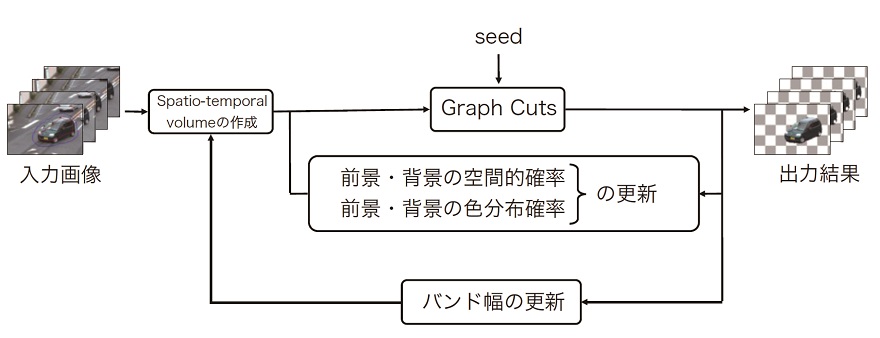Image Segmentation and Image Classification by Graph Cuts
Graph Cuts from MPRG, Chubu University on Vimeo.
The problem of image segmentation is an important issue in image processing. Image segmentation is a method of dividing (segmenting) a candidate object and the background region of a single image, which is utilized as preprocessing in ordinary object recognition and image montage. Graph Cuts is used as a commonly-used method of image segmentation. Graph Cuts is a method that defines energy functions from each region and performs image segmentation. This research has implemented accurate image segmentation, even of candidate objects having complicated edges, in incremental stages from global segmentation to local segmentationby repeatedly using smoothing images to perform Graph Cuts. We have also confirmed by experiments that stable segmentation is possible with respect to λ, which is a Graph Cuts parameter.

Graph Cuts Segmentation of Video Image
This image segmentation can be expanded to not just static images, but also video images. If a graph is created where each pixel of a video image is a node, the graph size will increase, making processing difficult. We therefore propose Graph Cuts due to repeated processing in which a video image is handled as time-series volume data and each volume is handled as a node.

Image Classification Utilizing Segmentation Results
Improvements in image classification performance can be expected by feature representation of the relationship between foreground and background obtained by image segmentation. The results of feature description for each foreground and background region that was segmented by Graph Cuts are shown in the figure below, when feature description is from the entire image. Deeper colors express valid features, where red is the background region and blue is the foreground region. In this case, this research proposed a bag-of-features using 2+1-dimensional vector quantization histograms focused on the co-occurrence of local features in the foreground and background, and has implemented highly accurate object recognition.
